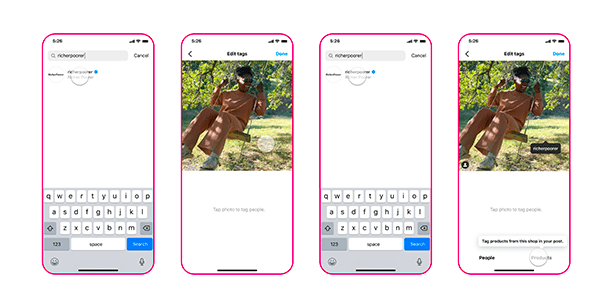It seems like things never stop changing on Instagram. The network keeps adapting its features to compete in the increasingly crowded social media landscape. So, do the Instagram best practices that worked in 2022 still apply in 2023?
While the fundamentals of your Instagram marketing strategy should stay consistent, some of the tactics you need to achieve your goals are shifting. Keep reading for a list of best practices that will help you succeed on the platform in 2023 and beyond.
25 Instagram best practices for 2023
Instagram marketing best practices
1. Set clear goals
You’ve heard this from us before and you’ll hear it again. Every great social media marketing strategy begins with a solid set of clear, measurable goals.
Are you planning to use Instagram to build brand awareness? Drive product sales? Engage with your community? Maybe all of the above?
What you want to get out of Instagram will determine what you should put into it. Think about how the platform’s various surfaces – feed posts, Reels, Stories – can contribute to real business goals.
2. Post at the right time
Hootsuite research shows that the best time to post photos on Instagram is 11 a.m. on Wednesdays. For Reels, it’s 9 a.m. and 12 p.m. Monday to Thursday. Keep in mind that the average Instagram business account posts 1.71 main feed posts per day.
That’s a good place for you to start. But to find the most effective time to post for your particular account, you’ll need to understand the Instagram habits of your particular audience.
3. Schedule your content in advance
Once you know the best times to post, you can start planning and creating your content in advance, then scheduling it to post at the appropriate time.
This allows you to create quality content in dedicated blocks of time, which maximizes your creative resources. It also gives you the breathing room to edit and review your content thoroughly before it goes live.
This also gives you a good overview and allows you to ensure you’ve planned the perfect mix of photos, videos, and carousel posts.
4. Engage with your followers
Remember: Instagram is not a broadcasting service. It’s a social network. That means your followers expect two-way communication and a sense of community. If you want people to engage with your Instagram content, you’ve got to get engaged yourself.
When you’re first getting started, it’s easy to reply to DMs and comments on your own. As your following grows, it can become overwhelming to keep up. At this stage, it’s a good idea to bring in some tools (and team members) to help manage your Instagram communication.
5. Tag your products
Nearly half of Instagram users shop the platform weekly.
Brands that tag their products in feed posts see 37% more sales on average. And brands that tag two or more posts per day see a 117% increase in transactions.
Tag across surfaces: Reels, stories, posts, and even ads. Sixty-one percent of weekly IG users say ads with tags make them more likely to shop.
6. Analyze and improve your results
We’ve already mentioned a few times that you’ll need to do some experimentation to learn what works best for your particular audience. That will continue to be an ongoing theme throughout this post.
To learn the results of your experiments, you need to use Instagram analytics. The native Instagram insights tool provides some good information to get you started.
Instagram Reels best practices
7. Make (more) Reels
Not using Reels yet? It’s definitely time to start.
Instagram is leaning hard into video in general and Reels in particular. Reels already account for 20% of time spent on the platform. And many research show that Reels get up to 300% more engagement than regular Instagram videos. The Instagram algorithm loves Reels, too.
So, this is a simple but very important Instagram best practice. Just make (more) Reels.
8. Show your human side
Reels that show a person have a 25% higher clickthrough. They’re not the right format for stuffy product videos. Be dynamic and show real humans using your products. Get your team involved. Show a little personality. Be human and have fun.
9. Make the most of the first 3 seconds
Capture attention right upfront with dynamic motion and teaser titles. (Just make sure you deliver on the promise of your title – watchbait is a big no-no.)
Show (and tell) people in the first three seconds what they’ll get out of your Reel and why they should keep watching. On that note…
10. Add text to your Reels
Adding text to your Reels offers a number of benefits. First and foremost, it makes your content accessible to the deaf and hard-of-hearing community. It’s also important for the 20% of Reels views that happen with the sound turned off.
Closed captions are now automatic on Reels unless you turn them off. Users can always adjust this on their feed if they don’t want to see captions, so there’s no advantage in turning them off on your end.
You can also add timed text to emphasize specific points in your video.


